1 Loraine Court
Inner Richmond
I recently attended a service at this columbarium for Alice Carey. Alice was a friend and one of America’s most respected historic architects.
On the cover of her memorial brochure was this photograph:
I knew it was time for me to explore the history of the columbarium and bring it to you.
The Columbarium is the only non-denominational burial place within San Francisco’s city limits that is open to the public and has space available. The crematorium was designed by British Architect Bernard J.S. Cahill in 1897. As you can see by the above photograph this Neo-Classical building was originally part of the 167-acre Odd Fellows Cemetery. The columbarium and cemetery survived a 1901 law that banned further burials with in the city limits, but the cemetery didn’t survive the development of the next several decades. In the 1930’s the city mandated that all cemetery gravesites be moved to Colma (nicknamed the City of the Dead), just south of San Francisco down the peninsula. The entire cemetery was moved leaving behind only the columbarium.
From 1934 to 1979 the building lay untended, some say it was even home to bootleggers during prohibition. In 1979 it was purchased by the Neptune Society and underwent a $300,000 restoration.
The Columbarium is considered one of his Cahill’s finest works. The Odd Fellows regarded death as a dignified and ordinary affair, without fear or morbid feelings. The interior of the Columbarium was furnished like a Victorian parlor with potted palms and oriental rugs. The neo-classical style building blends Roman Baroque, English neoclassicism, and 19th century polychrome.
The exterior has a Roman-inspired dome similar to Michaelangelo’s original conception for St. Peters. The dome is copper-clad and ribbed with an inner steel framework. A squat lantern is clad in copper with round openings and decorated with garlands. The walls are stucco and grooved to simulate stone.
The interior has four levels topped by a stained glass ceiling within the lantern. The dome is supported by eight Roman Doric piers. Flower and urn decorations are cast plaster. The central rotunda has four square wings.
The diameter, from the entrance to the stained glass window opposite, is 64 feet. The width of the rotunda within the Inner circle is 29 feet and the rotunda reaches a height of about 45 feet.
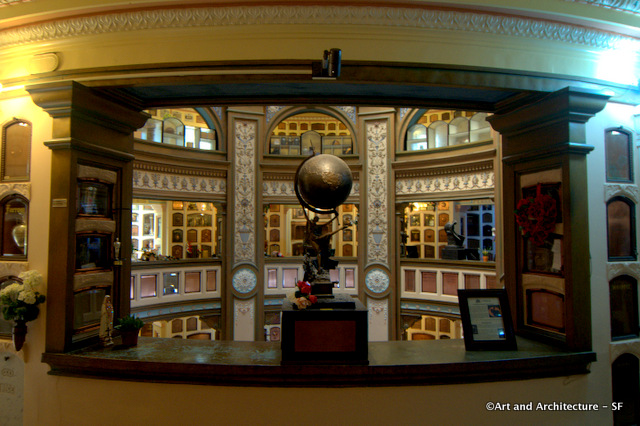 Original Odd Fellows literature described the rotunda of the Columbarium: “a delicate and refined atmosphere prevails here, divesting the mind of unpleasant feeling that so often goes hand in hand with anything associated with the burial of the dead.”
Original Odd Fellows literature described the rotunda of the Columbarium: “a delicate and refined atmosphere prevails here, divesting the mind of unpleasant feeling that so often goes hand in hand with anything associated with the burial of the dead.”
Built into the building’s four stories of passageways, the decorated niches for San Francisco citizens of the past tell the city’s history dating back to the 1890s, including the 1906 earthquake (which the building handily survived), Harvey Milk’s assassination and the staggering number of deaths during the height of the AIDS epidemic.
The first floor has the Greek names of the winds: Aquilo, Solanus, Eurus, Auster, Notus, Zephyrus, Olympias and Arktas. The second floor has the Greek names of the constellations: Corona, Zubanan, Cheiron, Argo, Sothis, Orion, Perseus and Kepheus.
The window in the Aquilo room depicting three angels in flight, was restored by The Hyland Studio, according to their website:
The Designer was a fellow named Harry Ryle Hopps, the glazier was E. B. Wiley. Mr. Hopps was born in 1869. We know that he was an owner of “United Glass Art Co.” located at 115 Turk St in San Francisco.
The Three Angels window was built in 1909. Three years after the 1906 earthquake, 7 years after the 1902 cemetery re-location began and one year before cremation was banned in the city which led to the eventual abandonment of the building.
The ground floor contains approximately 2,400 niches, the first floor 2,500, and the second and third floors approximately 1,800 each, with an overall total of more than 8,500.
Bernard Joseph Stanislaus Cahill (1866–1944), was a cartographer as well as an architect. He was born in London, England in 1866 and is known for his cemetery architecture and for the design of the San Francisco Civic Center. He was also the architect for a number of other commercial buildings, including the Multnomah Hotel in Portland, Oregon and various buildings in Vancouver, B. C.
He was also the inventor of the Butterfly World Map, like Buckminster Fuller’s later Dymaxion map of 1943 and 1954, the butterfly map enabled all continents to be uninterrupted, and with reasonable fidelity to a globe. Cahill demonstrated this principle by also inventing a rubber-ball globe which could be flattened under a pane of glass in the “Butterfly” form, then return to its ball shape.
There is a marvelous group of stories about some of the inhabitants of the Columbarium at Bella Morte, be sure to click on the name Emmitt Watson to read about him. His story is so entwined with the Columbarium that not knowing about Emmitt is not finishing your history lesson.
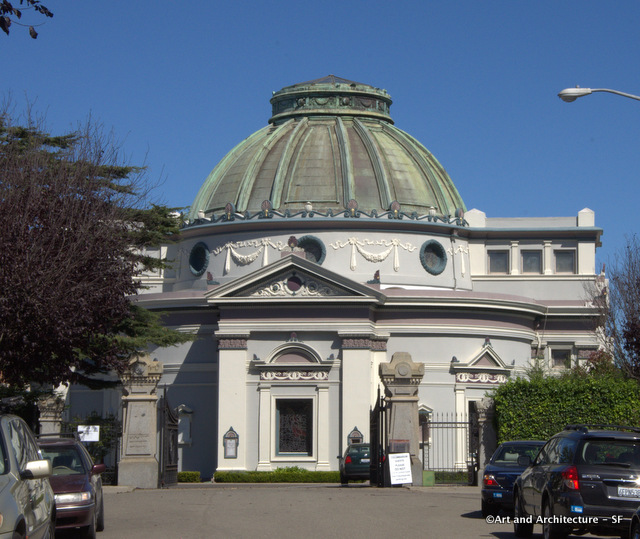
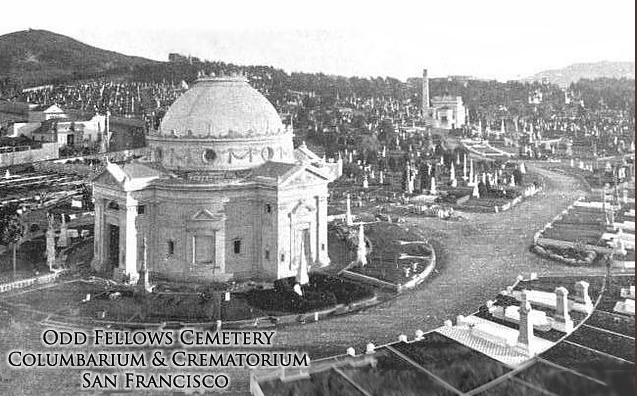

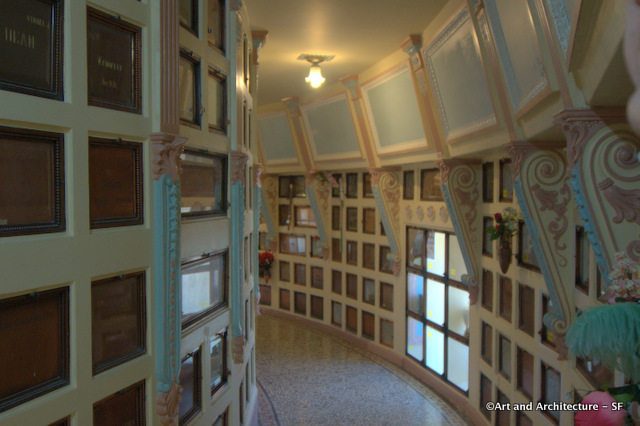
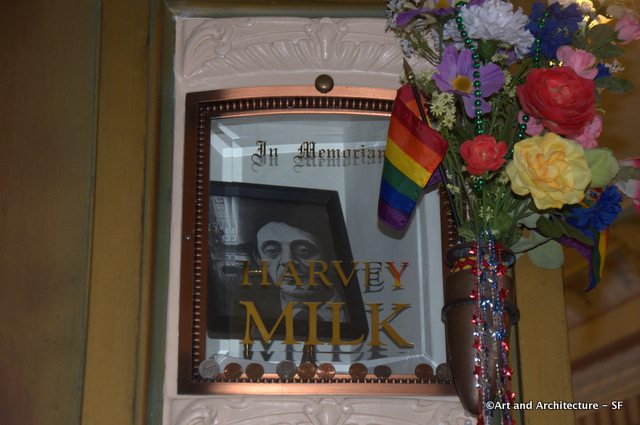
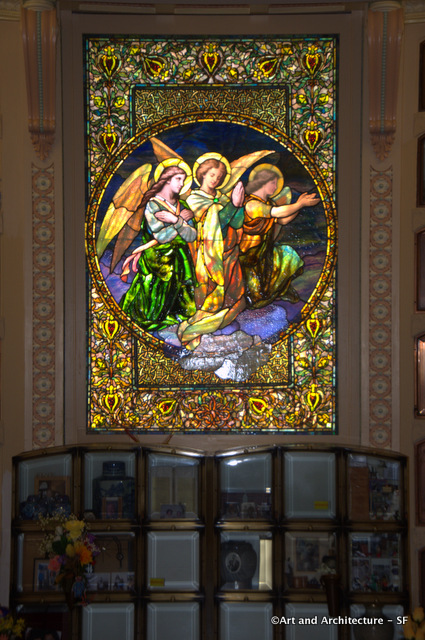
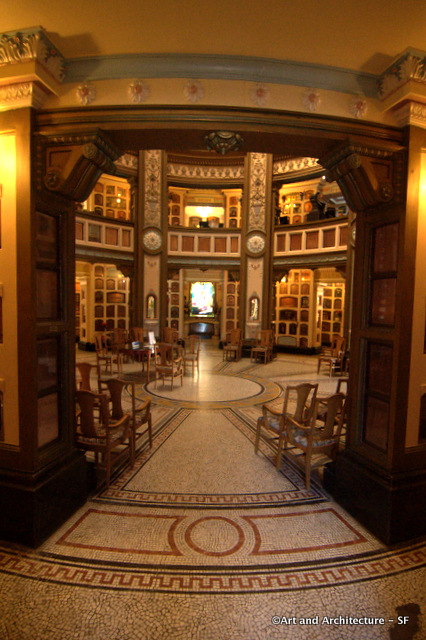
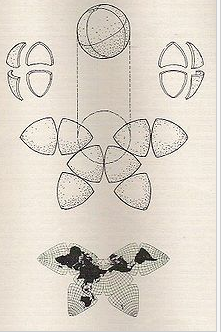
You’ve uncovered an incredible jewel in this building. Amazingly beautiful.
[…] These three pieces are by Josh Faught and are hanging around the Neptune Society / Historic Odd Fellows Columbarium. […]